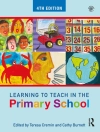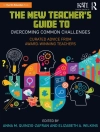Technology is more than just ‘Computer Class;’ it is a literacy that must be threaded throughout the fabric of a school. In a 1:1 environment, you’re preparing students to be responsible citizens of the physical and digital worlds. But it’s easy to get overwhelmed with devices; you have to have a plan for technology that keeps learning at center stage.
Here you’ll find a solid plan for designing a technology initiative that fuels student learning. Real-life examples, lessons, and interviews with stakeholders show you
- Why a 1:1 program is not only achievable but also beneficial and necessary
- How to choose the right devices
- The best ways to prepare teachers through professional development
- Best practices for instruction and personalization in a 1:1 environment
It’s more essential than ever to integrate digital and information literacy into the fabric of our schools. This practical resource will get you started on the journey.
‘ Marcinek provides a desperately needed resource based on practical experience that will help districts effectively and properly implement 1:1 initiatives.’—Eric Sheninger, Educational Consultant and Corwin Author, Digital Leadership
‘Ultimately, going 1:1 is about fostering a culture of trust and innovation, and this doesn’t happen overnight—you need a strong plan. Marcinek helps leaders get started with a 1:1 implementation, and teaches us how to prepare the entire school community for digital citizenship.’
—Salome Thomas-EL, Award-winning Principal and Author of ‘The Immortality of Influence’
قائمة المحتويات
Introduction
CHAPTER 1: THE 1:1 ROADMAP
Begin with the ‘Why?’
Infrastructure
Acceptable Use Policy
Selecting a Device
Teacher Readiness and Parent Support
CHAPTER 2: A CULTURAL SHIFT
Develop a Culture of Trust and Openness
Embrace Risk and Promote Innovative Practice
Devices Provoke Change
Innovation Begins with Trust
CHAPTER 3: CULTIVATING HEALTHY, RESPONSIBLE NETWORKS
Building Classroom Community
Educating the Community
CHAPTER 4: REMIXING PROFESSIONAL DEVELOPMENT
Schedule PD That Allows Time to Explore and Share
Integrating the Edcamp Format
Keeping the Momentum
Extending PD Opportunities
CHAPTER 5: THE CASE FOR A STUDENT HELP DESK
Student Help Desk Results
Authentic Learning Projects
CHAPTER 6: SUSTAINING DIGITAL COMMUNITIES
The Best Technology Is Good Teaching
Becoming a Connected Educator
CHAPTER 7: DISPELLING THE MYTHS OF EDTECH
Dispelling the Myths of 1:1 Environments
Alternatives to the Standard
CHAPTER 8: THE ROAD AHEAD
How Did You Get the Funding?
What Happens to Broken Devices?
How Were Devices Filtered beyond the School?
Were Social Media Sites such as Instagram, Snapchat, and Facebook a Distraction?
How Much Autonomy Did Students Have to Select Educational Apps That Fit Their Learning Style?
How Did Students and Teachers Send and Receive Assignments with Devices?
How Were Administrators Prepared for This Major Culture Shift?
What Happened in Those Classrooms Where Teachers Didn′t Adopt the Technology?
Conclusions
APPENDIX OF RESOURCES
District Vision for Digital Learning and Technology
Access to Digital Resources
Policy for Use of Student Information and Images for Educational Purposes
Internet Safety Consent Form
GDRSD Internet Empowered Digital Use Guidelines for Students K-8
Groton-Dunstable Regional School District Empowered Digital Use Guidelines for Technology and Networks-High School (9-12) Student Agreement Form
عن المؤلف
Andrew Marcinek has experience in combining technology and education spanning several years inside and outside of the classroom. Most recently he assumed the duties of Director of Technology at Grafton Public Schools. Prior to that, he served as the Director of Technology for Groton-Dunstable Regional School District and Instructional Technology Specialist at Burlington High School. Previously, he spent seven years as a secondary English teacher and college professor in Pennsylvania. At Burlington, he played a major role in launching a 1:1 i Pad environment, organizing the i Pad deployment and leading several educational technology professional development events in Burlington and Groton-Dunstable Regional School District.Beyond professional development and the i Pad launch at Burlington High School, Andrew has designed and created a digital and information literacy course that focuses on web 2.0 applications, Google Apps for Education, information literacy, and digital citizenship. Similarly, he created, designed, and developed the 1:1 high school student genius bar or “help desk” that provides technology support for students and staff.At Groton-Dunstable Regional School District, Andrew was in charge of a $562, 000 grant for technology. In that time, he created a strategic plan that provided a sustainable education technology environment that immediately impacted teaching and learning. Along with the tech team, he transitioned staff and students to Google Apps for Education, provided professional development for the entire staff, launched and managed 700 Google Chromebooks, presented weekly optional after-school professional development for staff, refreshed faculty laptops by providing choice between Mac and PC, and upgraded our network infrastructure to provide robust, wireless access in all six school buildings.Outside the classroom, Andrew organized four Edcamps and presented at various conferences around the country. Similarly, he developed community tech nights for both Burlington Public Schools and Groton-Dunstable Regional School District communities. This was a monthly event in the evening that provided a focused Ed Tech subject and workshop opportunities for anyone in the community. Andrew regularly blogs for Edutopia and consults with school districts on technology initiatives through his company, Educator U.org.












